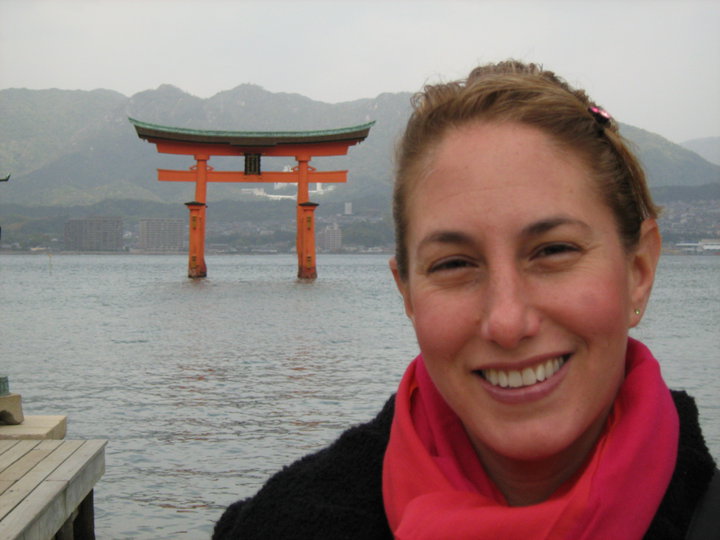
Graphic from “Vital Statistics in JAPAN -The latest trends,” by Japan Ministry of Health, Labour, and Welfare, via Tracy Slater.
In Japan, by far most “international marriages” (where one spouse is not from Japan) feature a Japanese husband married to a non-Japanese wife (see graph above).
However, for marriages between Japanese and Americans, couples where he's Japanese and she's non-Japanese are much more rare.
Quoting Nippon.com [1] and the Japanese Ministry of Health, Tracy Slater reports [2]:
In 2013 there were 21,488 international marriages in Japan (1 in 30 of all marriages). Of those, 6,046 were between Japanese women and foreign men, and of these, 19.2%, or about 1,161, involved American men marrying Japanese women.
On the other side, 15,442 marriages involved Japanese men, out of which 1.2%, or about 185, involved an American wife.
Tracy Slater, from Boston, is in fact happily married to a Japanese man has written a book about the experience so far.

Tracy Slater, courtesy the author.
The “Good Shufu: Finding Love, Self, & Home on the Far Side of the World [3]” will be published by Penguin Random House in June 2015. The author, Tracy Slater, left a successful professional career in Boston as a prolific writer [4], university lecturer and PhD recipient to marry a Japanese man.
Now residing in Osaka, Slater says:
In 2005, within a matter of months, I went from being a highly independent woman in Boston with a Ph.D., a job teaching writing to graduate students, and a great circle of like-minded friends, to a woman who couldn’t read, write, have a conversation with the neighbors, drive a car, or go to the bank myself.
In other words, I became a foreign wife in Japan: a gaijin shufu.
On her popular blog [5] that accompanies “The Good Shufu” promotional website, Slater says “strangely, my new role as ‘traditional Japanese housewife,’ didn’t bother me, despite my history of feminism.”
A few months after our marriage, I sat one night on the floor of my father-in-law’s living room, the worn but tidy rug rough under my limbs. I’d begun to call my father-in-law Otōsan, “respected father,” bowing low when he came for dinner three times a week, serving tea to him and Toru on the nights we ate at his house, just down the road from ours. Strangely, my new role as shufu, or “traditional Japanese housewife,” didn’t bother me, despite my history of feminism. This is not my culture, I thought. This is something I just do out of respect to Otōsan, when we’re with him. I surprised even myself by how easily I could play the part, as long as it was only for a few hours a week, in a country and language I knew I’d never call my own.
Besides providing insights into marrying across cultures, Slater also documents her experience with korei-shussan [6], or giving birth after the age of 40.
After several years of trying, Slater gave birth to a healthy baby girl at the age of 46. On her blog, Slater humorously recounts visits with her prenatal nurse [7] who declares that “Japanese men are no good” despite the fact Slater mentions her own husband helps with household chores.
Slater also describes what it's like to be a pregnant woman in Japan. There are plenty of comments about the size of her pregnant belly, for example.
As the publication date nears, Slater continues to update her blog and can be followed on Twitter here [8].
Note: This story has been updated with correct information about international marriages in Japan. Many thanks to Robert Moorehand of JAPANSociology.com [9].